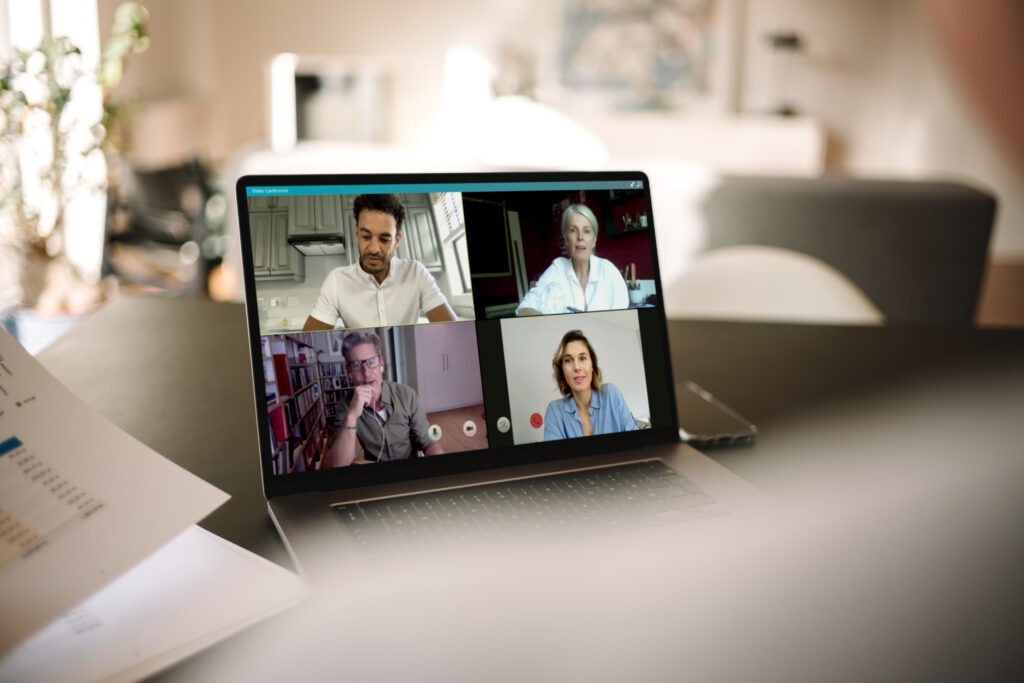Can we now imagine a more comfortable form of training and seminars than webinars? When the world held its breath, unable to take another step when the pandemic broke out, the world of education reacted quickly, transitioning almost all activities online. We didn’t have to resign from our plans, and additionally, we discovered how comfortable such a form is. Yet, don’t be usual when organizing a webinar; be the best. How do I host and participate in engaging online panels?
A webinar decoded
Probably a webinar is no longer a mysterious term, yet it may be quite useful to describe what a webinar is and what it isn’t. As a combination of the English words web and seminar, it says almost everything about this kind of seminar.
A webinar must keep the basics of a seminar, which means it’s an interactive dialogue between the lecturer and the students/participants. The presenter is the host and shares the information with the audience, but anyone who is eligible can talk.
Such a form of seminar is extremely cost-effective, decreasing the costs of both organizers and participants to a minimum. No need to pay for the venue, catering, accommodation, technicians, parking spaces, and many more. It’s enough to pay for the online space and pay the participants for their presentations.
Organize a webinar everyone will remember
It’s not challenging to organize a webinar that will have no influence on the audience or that will be a simple waste of time. The clue is to organize a webinar everyone will talk about and remember.
A webinar is a great tool for training or teaching in a very comfortable way. It can also be a form of product or service presentation or an opportunity for an interview with an expert in the form of an interactive conversation.
First, decide what topic your webinar will have, with all the details to plan the time and points to talk about, not to be too general or go too much into details.
Use text and visuals but in a reasonable amount. It’s best to have a script of what you want to say, which may be shown to the audience. Remember the visuals to keep the listeners active. Consider the place you will talk from to make sure the background is not distracting.
Use the apps designed for webinars, but test them beforehand. There is nothing worse than a speaker trying to figure out how to share the presentation or manage the participants. Don’t choose an app that is too complex, offering dozens of functions you will not even use.
Send invitations to your guests not a day before but weeks before, and keep reminding the participants about the event.
Make sure you practice your speech before the webinar to keep track of the time, the understanding of your script, and the technical tools. Leave the time for the questions.
Don’t forget about…
You have prepared everything, invited lots of audience members, and are ready to start your engaging webinar. Don’t forget about these basic tips during the webinar to keep it flowing and engage the audience.
Take short breaks, which will be refreshment time for both you and your audience. Remember that only an interactive webinar will be remembered and appreciated. Use voting, playing, asking, and answering questions.
Show your audience you care about them and give them something more than just knowledge: a discount coupon, extra access to your paid content, or some resources sent via email.
If you lack technical skills and are afraid of organizing the event on your own, some professionals will get everything ready for you. Some companies even offer their equipment, like cameras and microphones.
And remember promotion, promotion, promotion! Your webinar can have the most interesting topic in the world, the best camera, and the best speaker, but it still may be a disaster rather than a big success if barely anyone participates.
Without the promotion on social media or via email, people may miss the invitation, and you will end up with the most persistent 10 or 20 participants rather than a dozen or thousand.

